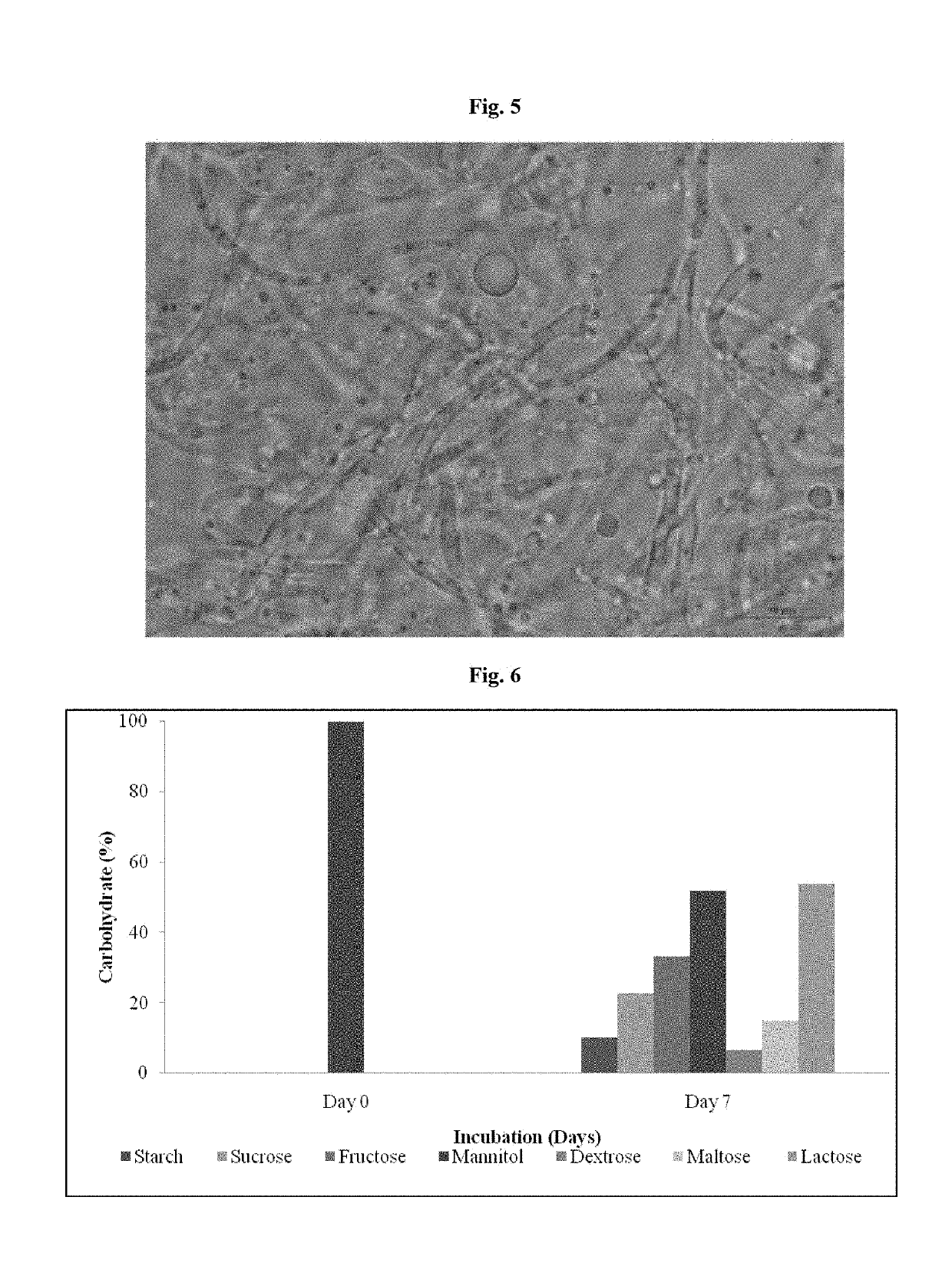Microbial bioconversion of curcuminoids to calebin-a
a technology of calebin-a and curcuminoids, which is applied in the direction of bacteria-based processes, plant/algae/fungi/lichens ingredients, fungi-based processes, etc., can solve the problems that the type and strain of most fungus remains to be identified
- Summary
- Abstract
- Description
- Claims
- Application Information
AI Technical Summary
Benefits of technology
Problems solved by technology
Method used
Image
Examples
example 1
, Identification and Characterization of Endophytic Fungus
[0061]Isolation of Endophytic Fungi
[0062]Curcuma caesia rhizomes were harvested at proper time and the well grown and non infected rhizomes were selected for the isolation of endophytic fungus. The processed rhizomes were washed in running water to remove all outer sand particles and then dried with tissue paper prior to the soaking in the 70% alcohol treatment for 1 min and then in the 5.3% Sodium hypochlorite for 5 min. Finally the rhizomes were soaked in 0.25% of Mercuric chloride (HgCl2) for 30 seconds and rinsed in distilled water for 1 minute and sliced both horizontally and vertically. The sliced rhizome pieces were carefully placed in the petri-dishes containing PDA medium with 0.5% w / v chloramphenicol. The Petri-dishes of inoculated rhizomes were then incubated at 28° C.-32° C. for 7 to 14 days with regular monitoring for its purity.
[0063]Screening and Identification of Endophytic Fungus
[0064]The grown culture was se...
example 2
sion of Curcuminoids to Calebin-A
[0073]Methods
[0074]The identified O. brasiliensis, MTCC 25236 was grown in PDB for minimum 7 days to maximum 21 days in 500 ml volumes of suitable media at optimal incubation conditions. 1%-5% of 72 hrs grown culture was added to 500 ml of PDB and incubated at 25-35° C. with 120 rpm agitation for 5-21 days. Pseudomonas putida, Acinetobacter johnsonii were grown in a media containing bacteriological peptone 17 g / L, soya peptone 3 g / L, dextrose 2.5 g / L, MnSO4 0.1 g / L, MgSO4 0.1 g / L, CaCl2 0.1 g / L, K2HPO4 2 g / L, KH2PO4 1 g / L, and pH was adjusted to 6.5. The media was sterilized for 15 min at 121° C. A single isolated colony of Pseudomonas putida and Acinetobacter johnsonii were inoculated into flask containing the media. Further, the flasks were incubated at 37° C. for 72 h. At different time intervals 24 h, 48 h, 72 h and 10 ml of broth was collected and checked for optical density (OD), total reducing sugar and pH.
[0075]Curcuminoids or commercially av...
PUM
| Property | Measurement | Unit |
|---|---|---|
| Temperature | aaaaa | aaaaa |
| Temperature | aaaaa | aaaaa |
| Temperature | aaaaa | aaaaa |
Abstract
Description
Claims
Application Information
 Login to View More
Login to View More - R&D
- Intellectual Property
- Life Sciences
- Materials
- Tech Scout
- Unparalleled Data Quality
- Higher Quality Content
- 60% Fewer Hallucinations
Browse by: Latest US Patents, China's latest patents, Technical Efficacy Thesaurus, Application Domain, Technology Topic, Popular Technical Reports.
© 2025 PatSnap. All rights reserved.Legal|Privacy policy|Modern Slavery Act Transparency Statement|Sitemap|About US| Contact US: help@patsnap.com



